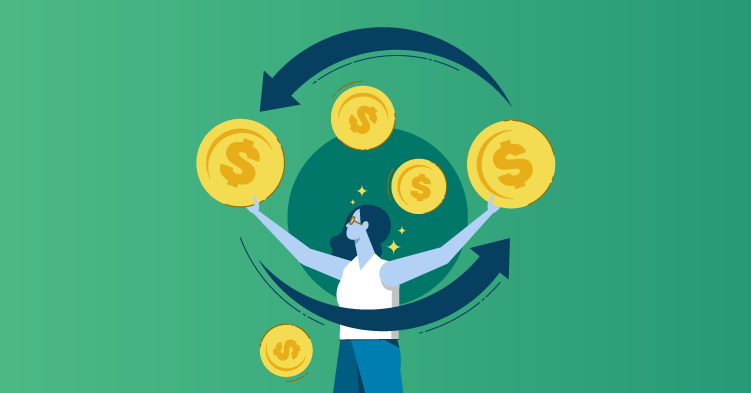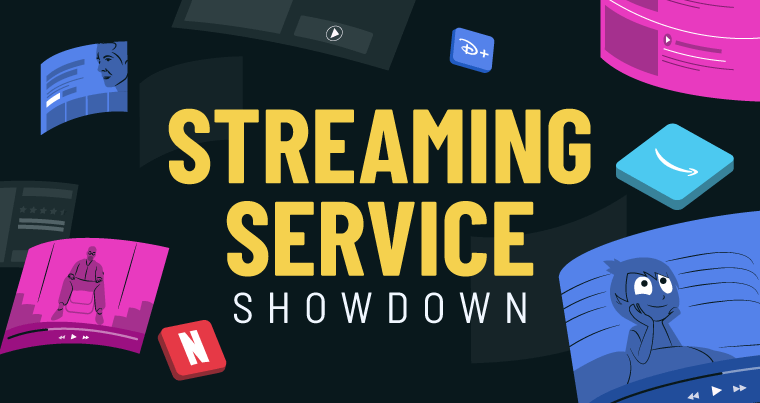A personal line of credit is a flexible borrowing option that lets you borrow what you need, when you need it — without having to reapply every time you need funds. It can help get you through emergency situations, and help you manage your everyday cash flow as well.
A personal line of credit can be a safety net that helps you bridge temporary financial gaps. Unlike a traditional loan, which provides a lump sum of money, a line of credit allows you to borrow smaller amounts when expenses pop up. This can give you greater control over the borrowing and repayment process.
What Is a Personal Line of Credit?
A personal line of credit, also known as a PLOC, is a form of revolving credit. It offers you the flexibility to borrow funds as you need them, which then become available to borrow again as you repay.
It’s often compared to a credit card because they’re both forms of revolving credit. If you’re approved, you’ll be given a credit limit that you can borrow up to — and you typically only pay interest (or fees) on the amount that you borrow.
Not all revolving credit accounts are the same, and there are some big differences between credit cards and lines of credit. One major difference is that a line of credit is designed to give you access to cash. When you draw from your line of credit, the funds will be deposited into your bank account, whereas a credit card primarily lets you charge purchases to an account.
How Does a Personal Line of Credit Work?
If you’re approved for a personal line of credit, your lender will set a credit limit. This is the maximum set amount of money you can borrow. You can draw everything or you can just borrow a portion to cover what you need.
When you take a draw, the funds will be deposited into your checking account. This is one of the major benefits of a personal line of credit. Not everything can be charged to a credit card, but the funds from a line of credit are like cash in your account and can be used for whatever you need.
The amount you pay in interest or fees will typically be based on the amount you draw from your line of credit. Every lender is different, and they may have additional fees as well. Make sure to carefully read the terms and conditions before you accept.
You can repay in smaller installments — depending on your lender this could be in weekly, bi-weekly or monthly payments. As you pay down your balance, the funds will become available for you to draw again.
How Long Does a Line of Credit Stay Open?
One thing to remember is that depending on your lender, your line of credit may not stay open indefinitely like a credit card. Some lenders have a draw period — which is the period of time you can access your line of credit. The draw period will vary from lender to lender but it’s typically around five to 10 years. If you still have a balance when your draw period ends, you enter the repayment period in which you’ll pay off the remaining balance.
What Are the Pros and Cons of a Personal Line of Credit?
Like all borrowing options, a personal line of credit has pros and cons. Be sure to carefully consider all sides before deciding what the best option is for you. Some factors to consider are:
Pros
- Flexibility. A personal line of credit can be a really flexible borrowing option. As long as you haven’t reached your credit limit, the money will be there for you to use when you need it. Unlike a personal loan which provides you a lump sum of cash, with a line of credit you can borrow the amount you need.
- Fast access to cash. When you have an open line of credit, you can make withdrawals whenever you need extra funds. You don’t have to reapply when you find yourself in a pinch. Plus, some lenders can get your money to you instantly or the same day.
- Only pay for what you borrow. While interest rates and fees will vary by lender, most of the time you’ll only be charged on the amount that you borrow and not the total limit. (Unless you draw the full limit.)
Cons
- High or variable interest rates. Some lines of credit will come with variable or high interest rates, which can increase the cost of borrowing or make it hard to plan repayment. Make sure you understand the terms of the agreement before you sign.
- Easy to overspend. Having quick access to cash can make it easy to overspend. Make sure to budget for the cost of repaying what you borrow.
- Fees. Some lenders may charge fees beyond the draw fee or interest. It’s important to review the contract so you don’t get surprised by any additional costs.
What Are the Fees and Interest Rates Associated With a Personal Line of Credit?
- Fees. Every lender is different and they’ll charge different fees. Some common ones include:
- Draw fee. When you make a draw a lender can charge a draw fee. This will be a small percentage of the amount you requested and it will typically be deducted from what they send you.
- Application fee. Depending on the lender, they may charge you a fee to process your application.
- Prepayment fee. Some lenders will charge you a fee for paying off your balance early.
- Non-sufficient funds fee. If you make a payment on your balance but don’t have enough money in your account to cover the payment — the lender may charge you a non-sufficient funds fee.
Maintenance fee. Some lenders may charge a monthly or annual fee to cover the cost of maintaining your account.
- Interest rates. The interest rates on personal lines of credit can vary widely. The rate you’re offered will depend on factors such as your lender and your credit history. A good credit score can help you get lower interest rates.
Are Personal Lines of Credit Secured or Unsecured?
A personal line of credit can be secured or unsecured.
Secured personal line of credit. A secured line of credit will require you to provide collateral to back the loan. This could be a savings account or certificate of deposit. Having collateral may mean that you can find a lower interest rate than an unsecured line of credit.
Unsecured personal line of credit. With an unsecured line of credit you won’t have to worry about putting anything up for collateral. This may make it more difficult to qualify and you could see higher interest rates.
Is a Personal Line of Credit Right for Me?
Whether or not a personal line of credit is right for you depends on your unique situation — and you should consider all your options carefully before making a decision.
Can You Get a Personal Line of Credit With a Bad Credit Score?
It’s possible for borrowers with less-than-perfect credit to get a line of credit. Online lenders often have less stringent requirements that can make qualifying easier.
Keep in mind that if you have poor credit, you may see higher interest rates and less favorable terms. The good news is that a line of credit can help you build credit as long as you make on-time payments and your lender reports to the credit bureaus.
Where Can I Get a Personal Line of Credit?
Online lenders, banks and credit unions offer personal lines of credit. When comparing offers from different financial institutions, be sure to look at factors such as fees, annual percentage rate, loan amount, draw periods and repayment periods.
Alternatives to a Personal Line of Credit
There are other types of credit that you may want to consider before making a decision. Depending on your situation and financial goals, another option may be a better fit.
Credit card. A credit card is another type of revolving credit. It lets you charge purchases to your account, up to your available credit limit and pay it back over time. You can also request a cash advance. Credit cards can be secure or unsecured, and interest rates and fees will vary depending on the credit card provider.
Personal loan. A personal loan provides a one-time lump sum payment that’s repaid over time. They’re not as flexible as a revolving line of credit or credit card, but they can be useful for funding large purchases. You can have a secured or unsecured loan, and interest rates and loan terms will vary by lender.






